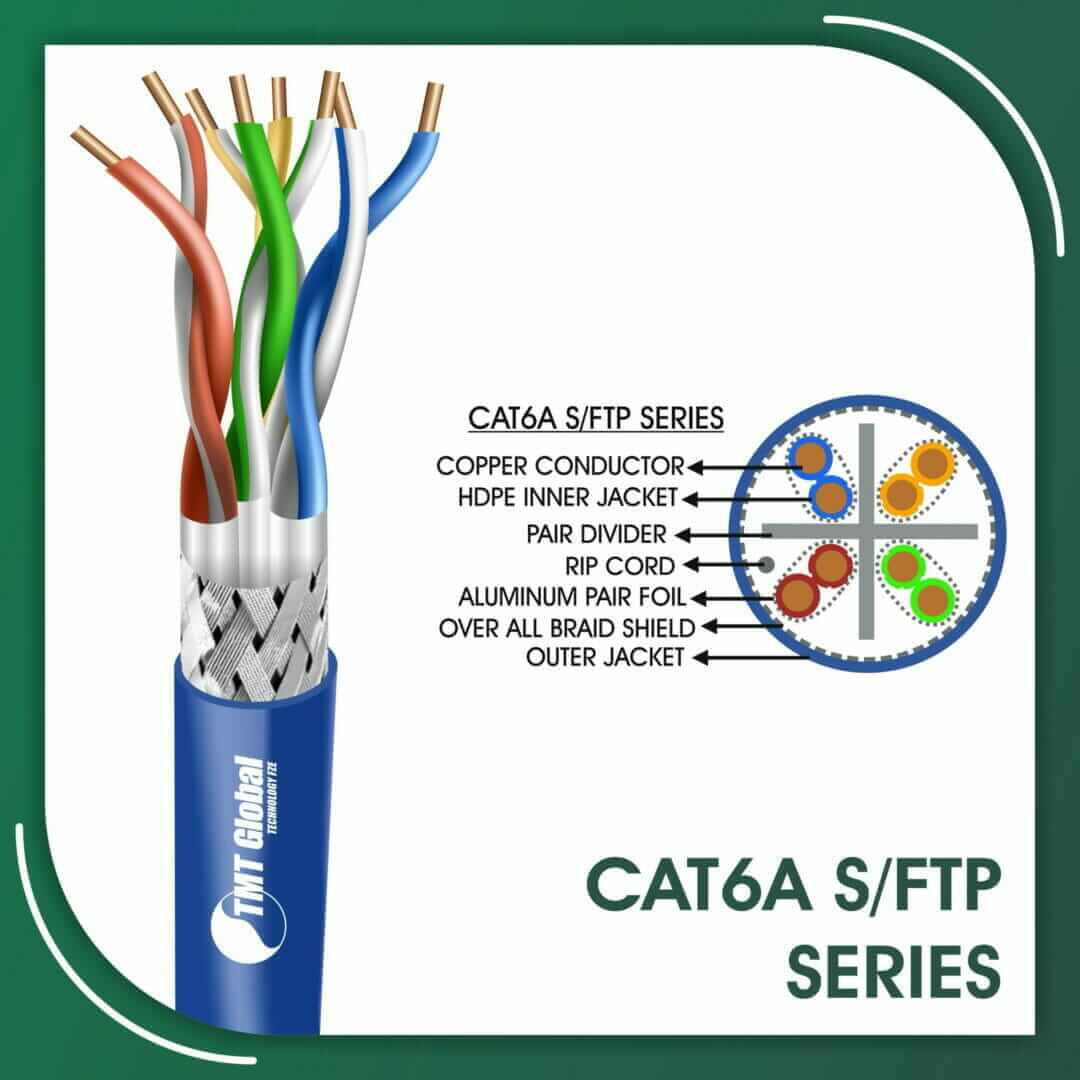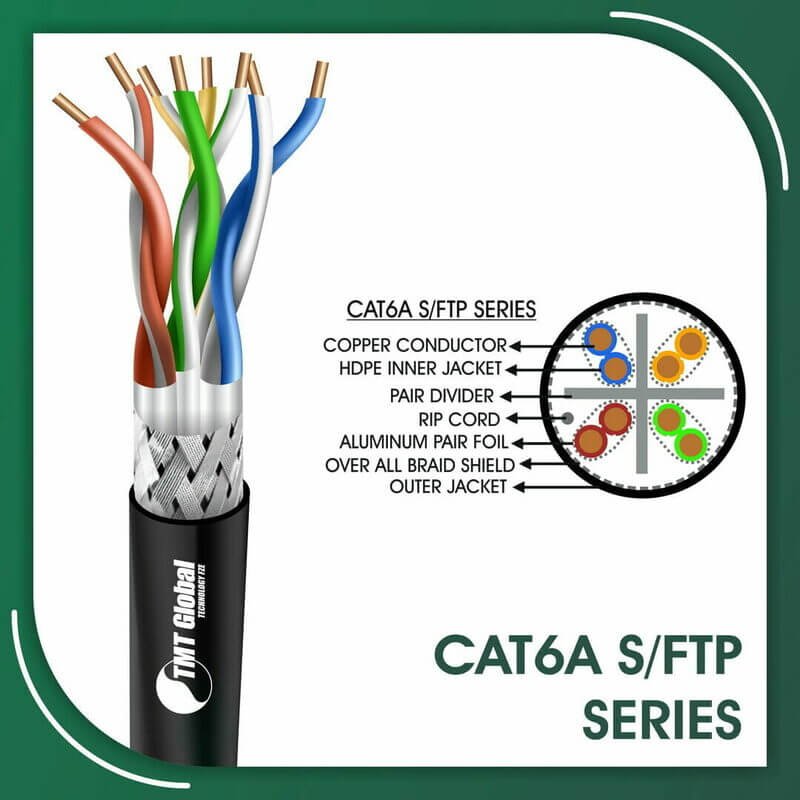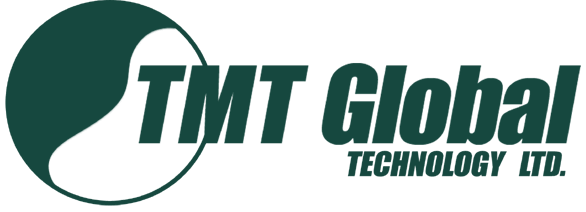Understanding Cat5 and Cat5e Cable Connectors: Color Codes and Manufacturing Insights from TMT Global Technology Ltd

Introduction to Ethernet Cables
Ethernet cables are vital components in modern networking, serving as the primary medium for data transmission between devices in both residential and commercial environments. These cables enable efficient communication by connecting computers, routers, switches, and other networking devices, facilitating the exchange of information across the internet. Among the various types of Ethernet cables available, Cat5 and Cat5e cables are two of the most commonly used variants.Cat5 and Cat5e Cable Connectors
Category 5 (Cat5) cables were originally introduced to support network speeds up to 100 Mbps, operating effectively within a frequency range of 100 MHz. This type of cable was widely utilized for basic networking tasks, such as internet connectivity and local area networks (LANs). However, as the demand for higher data transfer speeds has increased, Cat5 cables have become less common in favor of more advanced types.





Category 5 enhanced (Cat5e) cables represent an improvement over their predecessor, designed to mitigate crosstalk and other forms of interference. Cat5e cables can support network speeds of up to 1 Gbps and can operate efficiently at frequencies up to 100 MHz. This enhanced capability makes them suitable for a variety of applications, including VoIP services and video streaming, which require greater bandwidth for optimal performance.
Understanding the different types of Ethernet cables, their specifications, and appropriate applications is crucial for anyone involved in setting up a network. The choice between Cat5 and Cat5e cables will depend largely on the specific networking needs, such as speed requirements and the intended environment. Thus, a comprehensive understanding of both cables, along with their connectors and color codes, becomes essential for effective networking solutions.
What is a Cat5 Cable Connector?
The Cat5 cable connector is a crucial component in the category of twisted pair cables used for networking purposes. Commonly known as the RJ45 connector, it is designed to ensure the effective transmission of data in Ethernet networks. The structure of the RJ45 connector consists of eight pins, which correspond to the eight wires within a Cat5 cable. These pins establish an electrical connection, facilitating the flow of data between devices such as computers, routers, and switches.
One of the prominent features of the RJ45 connector is its tab-lock mechanism, which secures the connector into the socket and prevents accidental disconnections. This design is particularly beneficial in environments where network stability is critical. The outer sheath of the Cat5 cable is stripped to reveal the individual pairs of wires, which are then arranged according to a specific wiring standard—either T568A or T568B—before being inserted into the RJ45 connector. This correct arrangement is essential for maintaining the integrity of the data transmission.
When comparing Cat5 connectors to those used in earlier Ethernet standards, such as the RJ11 connector, several significant differences emerge. The RJ11 connector, typically employed for telephone systems, is smaller and has only four or six pins, making it less suitable for the higher data transfer rates required by network applications. In contrast, the RJ45 connector can handle speeds up to 100 Mbps, which is a hallmark of the Cat5 specification. This enhancement in connectivity makes the Cat5 cable connector a vital element in modern networking solutions.
Advancements in Cat5e Connectors
In recent years, significant advancements have been made in the design and functionality of Category 5e (Cat5e) connectors compared to standard Category 5 (Cat5) connectors. These enhancements primarily revolve around performance improvements, which have resulted in elevated bandwidth capabilities and a notable reduction in signal interference. As technology continues to evolve, the need for faster and more reliable network connections has become paramount, solidifying the importance of adopting Cat5e connectors for modern networking requirements.
One of the key upgrades found in Cat5e connectors is their ability to support higher data transmission speeds. While Cat5 connectors were limited to speeds of 100 Mbps, Cat5e connectors can handle speeds up to 1 Gbps, making them suitable for more demanding applications such as video conferencing, online gaming, and large data transfers. This increased bandwidth directly correlates to improved network performance, allowing users to experience smoother connectivity and faster service.
Another critical enhancement is the reduction of interference. Cat5e connectors are designed with improved shielding and twisted pair configurations, which work together to minimize crosstalk and external electromagnetic interference. This is particularly relevant in environments with multiple network devices or sources of electronic noise, where signal degradation can hinder performance. The robust design of Cat5e connectors ensures that data integrity is maintained, resulting in a more stable and reliable network connection.
Choosing the appropriate connector is vital for maximizing network efficiency. By opting for Cat5e connectors over their Cat5 counterparts, individuals and businesses can future-proof their networking setups, ensuring that they remain viable as technology advances. Understanding these advancements in Cat5e connectors ultimately aids in making informed decisions that contribute to enhanced networking experiences.
Understanding Color Codes in Cat5 and Cat5e Cables
The color-coding system used in Cat5 and Cat5e cables is critical for the proper termination of connectors. These cables are designed with eight insulated copper wires, arranged in four twisted pairs. Each pair is assigned distinct color codes to ensure accurate connections and optimal performance. The standard color-coding for these cables follows a specific scheme that aids technicians and installers when terminating connectors.
In a typical Cat5 cable, the color codes are as follows: white with blue stripe (pair 1), solid blue (pair 1), white with orange stripe (pair 2), solid orange (pair 2), white with green stripe (pair 3), solid green (pair 3), white with brown stripe (pair 4), and solid brown (pair 4). The organization of these colors into pairs reduces electromagnetic interference and helps maintain signal integrity, which is essential for high-speed data transmission.
When it comes to Cat5e cables, the color-coding remains the same as Cat5, allowing for backward compatibility. However, Cat5e cables are designed to support higher data transmission speeds and reduced crosstalk compared to their predecessor. This enhanced performance is achieved through tighter twisting of the pairs and improved shielding methodologies, necessitating careful adherence to the color codes during installation.
It is important for those involved in network installations to clearly understand the pinouts associated with these cables to ensure correct wiring. Incorrect connection of the color codes can lead to network failures and reduced data transmission speeds. By referencing a visual guide, technicians can easily identify the corresponding wires and their roles in both Cat5 and Cat5e configurations. Properly following these standards ensures reliable networking solutions that leverage the potential of modern technology.
The Manufacturing Process at TMT Global Technology Ltd
TMT Global Technology Ltd incorporates a meticulous manufacturing process dedicated to producing high-quality Cat5 and Cat5e cables and connectors. The first step in this process is the selection of premium materials. The company prioritizes using high-grade copper conductors, which are essential for ensuring optimal electrical performance and minimal signal loss. In addition to copper, TMT also integrates insulation materials that meet industry standards for durability and flexibility, which are crucial for different applications and environments.
The assembly of Cat5 and Cat5e connectors is performed using state-of-the-art machinery that is designed to enhance efficiency while maintaining precision. Automated processes are deployed in cutting, stripping, and crimping the cables to guarantee consistency across production runs. Each piece is configured to strict specifications that align with networking standards, ensuring that both Cat5 and Cat5e cables provide effective data transmission rates essential for modern communications.
Quality control is a fundamental aspect of TMT Global Technology Ltd’s manufacturing process. Each batch of cables and connectors undergoes rigorous testing to verify performance metrics such as transmission speeds and overall durability. This not only safeguards the final products but also instills confidence in users regarding the reliability of their networking solutions. Following production, the connectors and cables are inspected for faulty components, and any identified issues are addressed immediately to maintain high-quality standards.
Furthermore, TMT Global Technology Ltd stays at the forefront of innovations in cable manufacturing technology. By employing advanced manufacturing systems and materials that adhere to evolving industry norms, TMT ensures that its Cat5 and Cat5e products remain competitive in the marketplace. The emphasis placed on quality, performance, and durability reflects TMT’s commitment to delivering exceptional networking products to its clients.
Common Uses and Applications of Cat5 and Cat5e Cables
Cat5 and Cat5e cables serve as essential components in a multitude of networking environments, including residential, commercial, and industrial settings. These cables are primarily used for Ethernet connections, providing a reliable means of transmitting data between devices at speeds of up to 100 Mbps (for Cat5) and 1 Gbps (for Cat5e) over distances of up to 100 meters. In home networks, Cat5 and Cat5e cables facilitate high-speed internet connectivity by connecting routers, switches, and various devices such as computers, gaming consoles, and smart TVs.
In office settings, the deployment of Cat5e cables is particularly prevalent due to their enhanced performance capabilities. Businesses rely on these cables for connecting computers to local area networks (LANs), enabling smooth data sharing and communication. Cat5e cables further support Power over Ethernet (PoE) applications, allowing devices such as IP cameras and VoIP phones to receive both power and data through a single cable. This functionality is crucial for reducing the clutter of wiring and streamlining installation processes.
Data centers, which require robust and efficient networking solutions, also utilize Cat5e cables. These facilities often employ a large number of networking devices, such as servers, switches, and routers—all of which demand efficient data transfer. While upgrading to higher categories like Cat6 or Cat6a is common in these environments, Cat5e remains a cost-effective option for many applications due to its proven reliability and adequate performance for moderate traffic.
In summary, Cat5 and Cat5e cables are versatile tools that find applications in various settings, from home networks to expansive data centers. Their ability to handle a variety of networking devices makes them suitable for meeting the diverse needs of users while ensuring efficient data transmission.
Installation and Maintenance Tips for Cat5 and Cat5e Cables
When it comes to ensuring optimal performance from Cat5 and Cat5e cables, proper installation and maintenance practices are paramount. One critical aspect of successful cable management is to avoid excessive bending or twisting of the cables during installation. Maintaining the manufacturer’s recommended bending radius helps preserve signal integrity and reduces the risk of degradation over time.
Additionally, it is essential to secure cables neatly to prevent tangling and accidental damage. Utilizing cable ties or clips can aid in organizing cables efficiently, preventing the mess that often leads to confusion and troubleshooting problems down the line. Furthermore, label all cables clearly at both ends, as this will facilitate easier identification during maintenance or upgrades.
Testing cables post-installation is equally crucial. Utilizing specialized cable testers ensures that the connections are secure and functioning at the required standards. This proactive measure can help detect issues such as poor connections, wiring faults, or improper terminations early, minimizing the risk of future disruptions in network performance.
In terms of troubleshooting, keep an eye on performance indicators, such as slow network speeds or inconsistent connections. Addressing these signs swiftly by checking for loose connections or interference is vital to maintaining an efficient networking environment. There may be instances where you find the need to extend the lifespan of existing cables. Implementing protective conduits, avoiding contact with hot water pipes, and placing cables away from high electromagnetic interference sources can significantly reduce wear and tear.
Overall, a well-planned installation coupled with regular maintenance practices can ensure that your Cat5 and Cat5e cables deliver maximum performance over their expected lifespan. By adhering to these guidelines, you create a reliable networking foundation that can support your communication needs effectively.
Comparison of Cat5 and Cat5e with Other Ethernet Standards
When evaluating networking solutions, understanding the distinctions between various Ethernet standards, including Cat5, Cat5e, Cat6, and Cat6a, is critical for selecting the most suitable option. While Cat5 and Cat5e cables formed the backbone of early networking systems, advancements in technology have led to the development of higher-category cables that offer improved performance and capabilities.
Cat5 cables support data transmission speeds of up to 100 Mbps and a bandwidth of 100 MHz. They are primarily designed for basic networking solutions, making them well-suited for residential settings or small offices that do not require high-speed connections. In contrast, Cat5e cables build upon this foundation by reducing crosstalk, allowing for data transfer rates of up to 1 Gbps with a bandwidth of 100 MHz. This characteristic makes Cat5e an efficient choice for environments needing higher speeds without the financial commitment of more advanced categories.
When comparing these cables to Cat6, the differences become more pronounced. Cat6 cables provide support for speeds up to 10 Gbps over limited distances, alongside a significantly enhanced bandwidth of 250 MHz. This increased capability is essential for commercial applications that demand high-speed internet and substantial data transfer. In addition, Cat6a cables further enhance performance by extending the maximum bandwidth to 500 MHz, enabling them to support high-speed networks more effectively at distances up to 100 meters.
Ultimately, the choice between Cat5, Cat5e, Cat6, and Cat6a cables hinges on the specific networking requirements. For residential use or light-duty demands, Cat5 or Cat5e may suffice, while higher-capacity needs in commercial environments will find better solutions with Cat6 and Cat6a options. Understanding these differences allows consumers to tailor their cable selection to their precise networking needs.
Conclusion and Future of Ethernet Technology
Understanding the intricacies of Cat5 and Cat5e cable connectors is paramount in today’s rapidly advancing Ethernet technology landscape. These cables remain foundational elements in facilitating reliable data transmission across networks. With the increasing demand for high-speed internet and improved connectivity, the importance of these connectors cannot be overstated. Both Cat5 and Cat5e cables feature distinct color codes that aid in proper installation, ensuring that data integrity is maintained and that network performance is optimized.
As we look toward the future of networking technologies, it is essential to acknowledge the trends that are shaping the industry. The advent of higher bandwidth applications and emerging technologies—such as the Internet of Things (IoT) and smart cities—places significant pressure on existing infrastructures. This shift likely leads to a gradual phasing out of older technologies in favor of newer, more efficient cable standards like Cat6 and Cat6a. However, Cat5e cables, with their enhanced performance capabilities over Cat5, will continue to find relevance in smaller applications and residential settings.
Moreover, the developments in cable manufacturing, particularly from industry leaders like TMT Global Technology Ltd, highlight a commitment to innovation and quality. Enhancements in materials and production techniques can lead to more reliable performance and reduced susceptibility to interference. Future advancements may introduce even more robust connectors designed to meet the escalating needs of modern networking environments. TMT Global Technology Ltd’s focus on research and development suggests that the company will remain at the forefront of these trends, ensuring that their offerings align with the evolving demands of the marketplace.
In conclusion, understanding Cat5 and Cat5e cables and connectors is not only vital for current applications but also essential for anticipating future changes in Ethernet technology.
